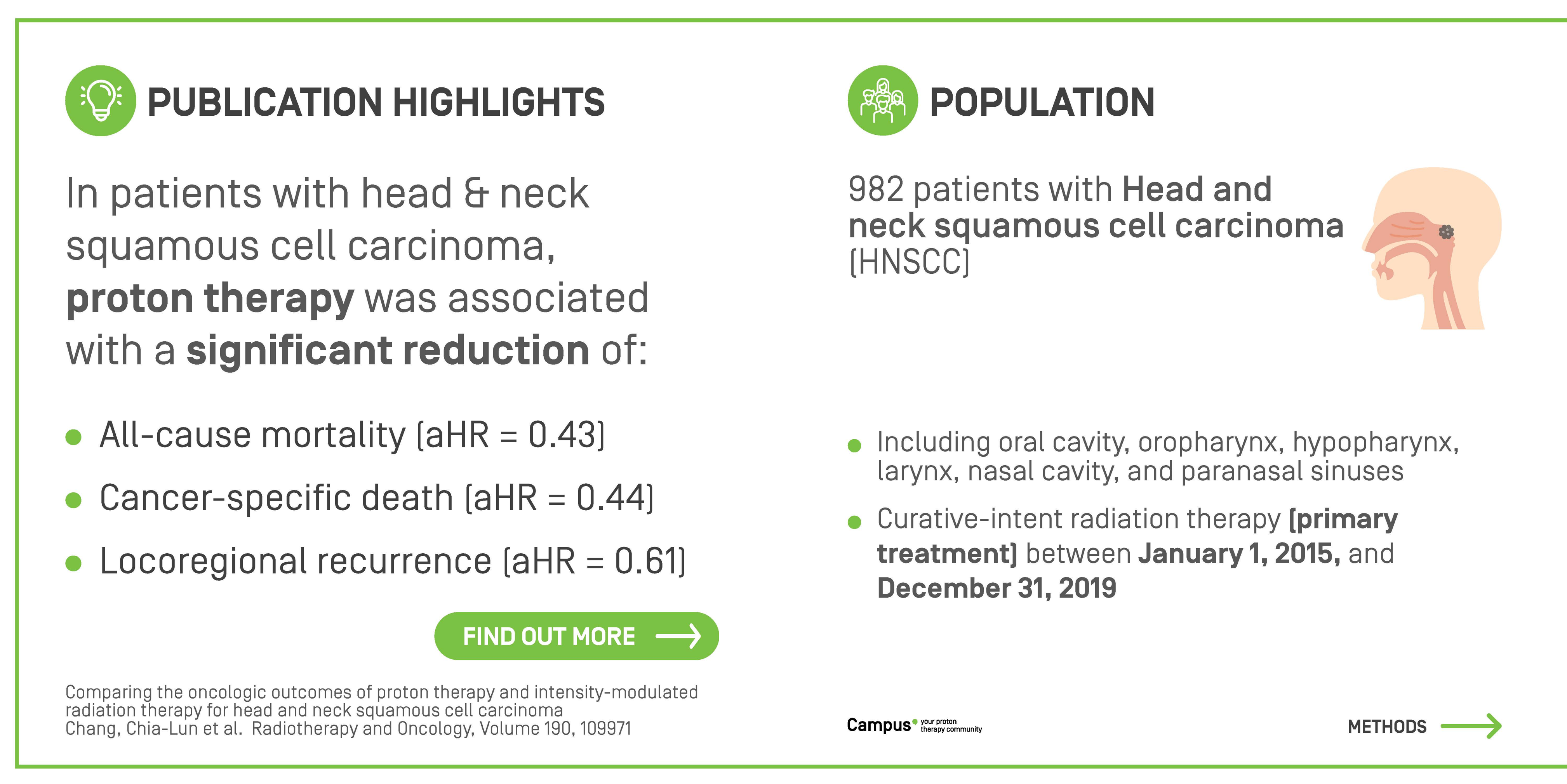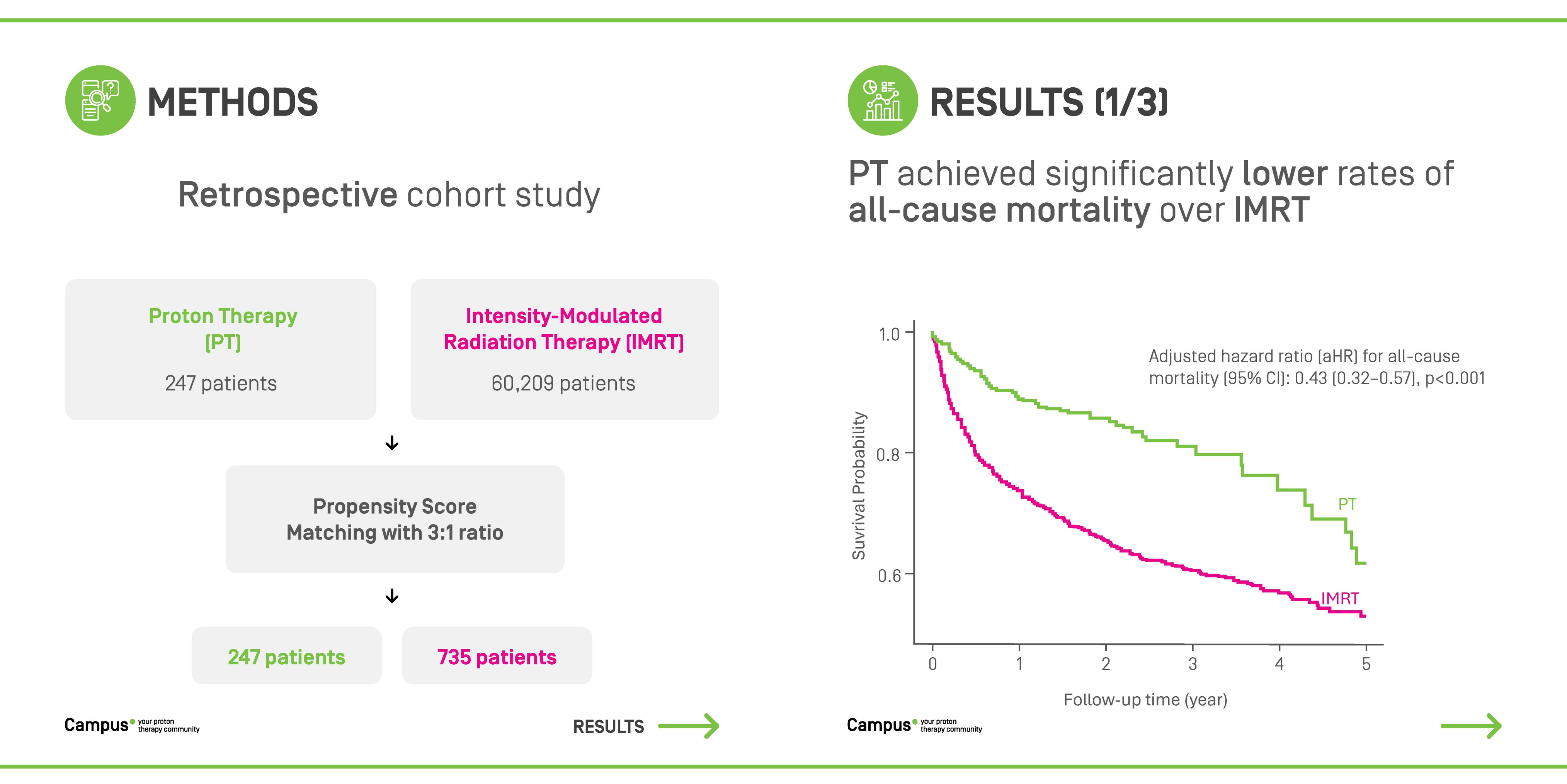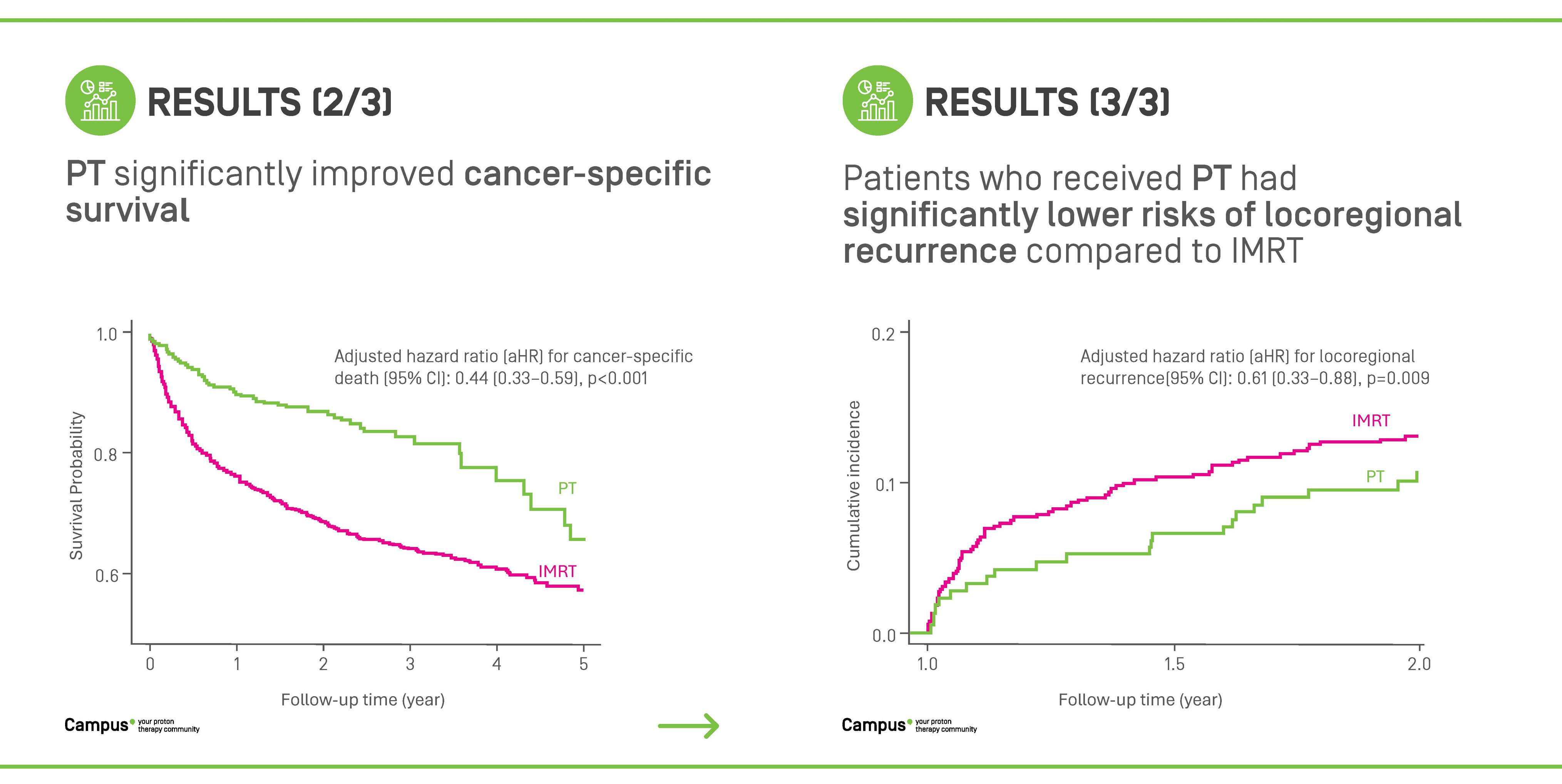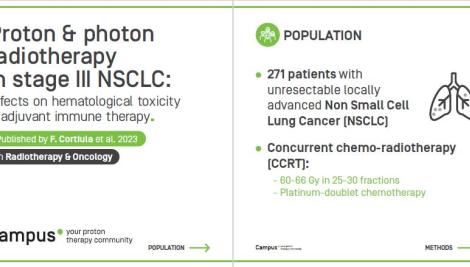Subtitle
Comparing the oncologic outcomes of proton therapy and intensity-modulated radiation therapy for head and neck squamous cell carcinoma.
To compare the oncologic outcomes between proton therapy and intensity-modulated radiation therapy (IMRT) for head and neck squamous cell carcinoma (HNSCC) patients undergoing curative radiotherapy (RT). Experimental Design: We studied HNSCC patients who underwent curative-intent RT from 2015 to 2019, comparing the oncologic outcomes of proton therapy and IMRT. Our national retrospective HNSCC cohort study involved three institutes with proton therapy and 17 institutes (medical center levels) with IMRT in Taiwan. We utilized the Taiwan Cancer Registry Database to collect medical data for this study. We classified patients into two groups based on treatment method: Group 1 received IMRT, while Group 2 received proton therapy. 3:1 propensity score matching was performed to minimize the impact of potential confounders. Cox proportional hazards models were used to evaluate oncologic outcomes. Results: This study of 60,485 patients with HNSCC found that proton therapy was associated with better overall and cancer-specific survival and lower locoregional recurrence rates than IMRT. After matching, 982 patients were analyzed, with well-balanced factors. Proton therapy was a significant predictor of all-cause mortality, cancer-specific death, and locoregional recurrence (LRR). Patients who received proton therapy had significantly lower risks of all-cause mortality (adjusted hazard ratio, aHR =0.43), cancer-specific death (aHR =0.44), and LRR (aHR =0.61) than those who received IMRT. Conclusion: Proton therapy is associated with superior outcomes in terms of overall survival, cancer-specific survival, and locoregional recurrence rates compared to IMRT in patients with HNSCC. These results provide valuable evidence for clinicians and patients in decision-making regarding the choice of radiation therapy for HNSCC.






